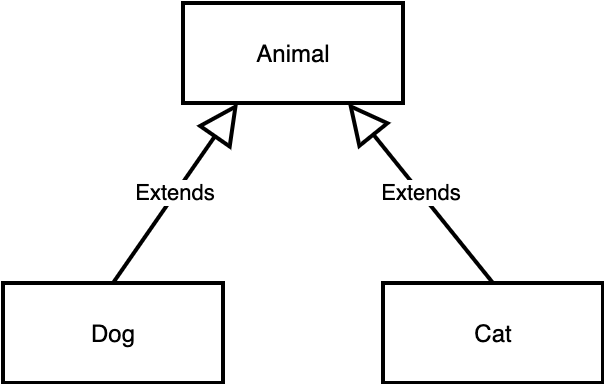Exercise
- Develop an example of runtime polymorphism.
Exercise Make up an example to showcase runtime polymorphism for the following type hierarchy:

Solution
Consider the following implementations for the makeSound method:
public class Animal {
public void makeSound() {
System.out.println("Grr...");
}
}
public class Cat extends Animal {
@Override
public void makeSound() {
System.out.println("Meow");
}
}
public class Dog extends Animal {
@Override
public void makeSound() {
System.out.println("Woof");
}
}
If we execute the following code,
Animal[] animals = new Animal[5];
animals[0] = new Animal();
animals[1] = new Cat();
animals[2] = new Dog();
animals[3] = new Dog();
animals[4] = new Cat();
for (Animal a: animals) {
a.makeSound();
}
It will print
Grr...
Meow
Woof
Woof
Meow
JVM dispatches the implementation of makeSound according to actual type of a at each iteration, at runtime.
By the way, does this "for loop" look strange to you?
for (Animal a: animals) {
a.makeSound();
}
If yes, please review Oracle's Java Tutorial: The for Statement. The syntax is referred to as the enhanced for statement; it can be used with Collections and arrays to make your loops more compact and easy to read.